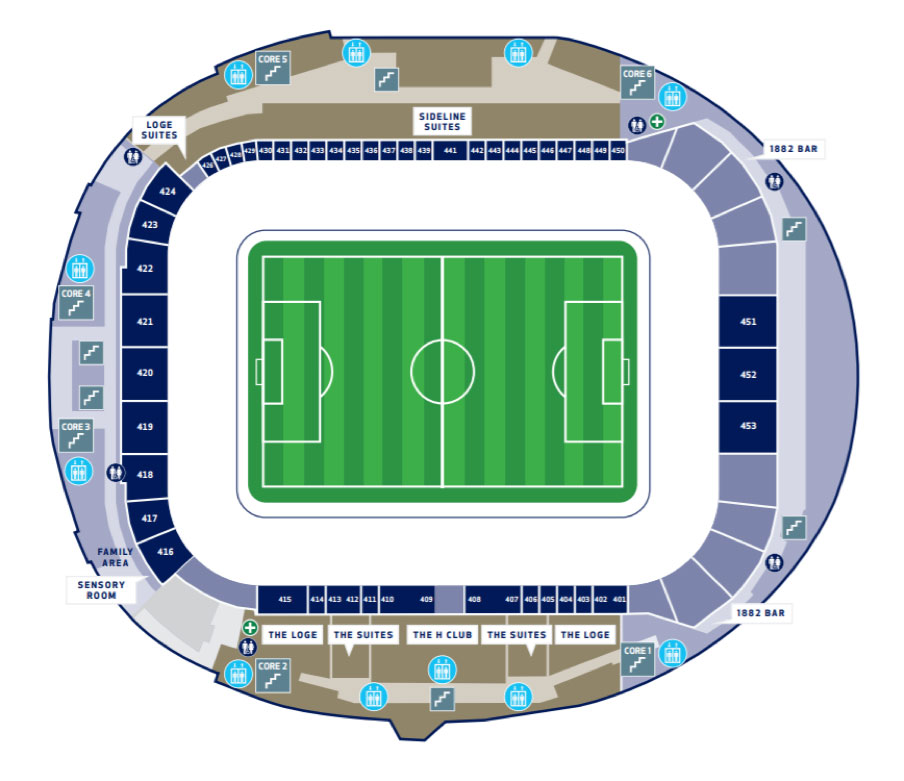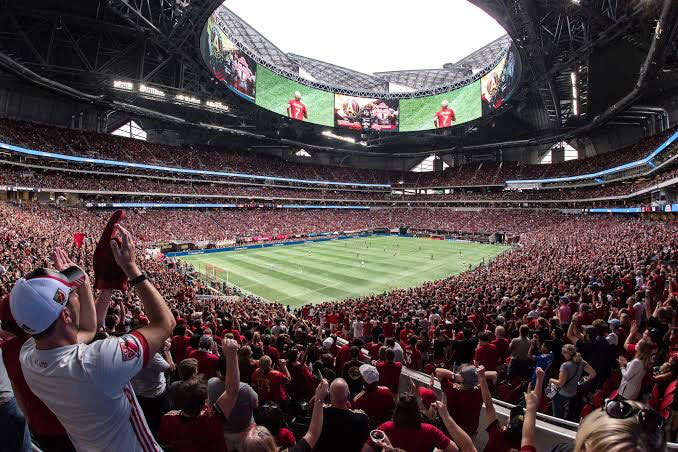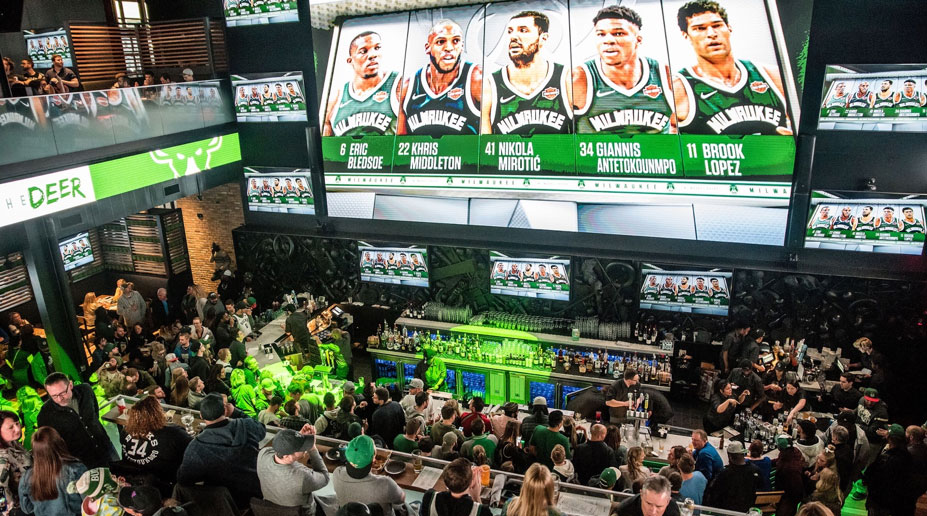
Beyond the Game: The Emergence of Superior F&B Offerings in Sport Stadiums
The ball is in the court for F&B operators expanding their market to sport stadiums, with this sector raising the game on food and drink offers for sport and event patrons. Catering to the ever-growing trend of experiences not just entertainment, stadium F&B offerings are more interesting and diverse than ever before.
“IN THIS ARTICLE I take a look at the best in breed F&B operators moving into sport arenas and stadiums and the potential upsides that has over the risks of high street operations and what stadiums should be doing to attract great local and international hospitality operators and restaurateurs.”
WHY ARE F&B OFFERINGS SO IMPORTANT TO STADIUMS AND ARENAS?
Entertainment has always been the essence of live sports and events. But, possibly that’s just not enough especially when the focus of attraction moves increasingly towards Millennials, Gen Y and Gen Z. Stadiums now need to ensure that entertainment and experiences are the essence of attraction. F&B also contributes a significant revenue stream for stadiums in many cases it’s the second or third highest revenue driver.

London’s Tottenham Hotspur revolutionised spectators’ experience when the stadium was opened earlier this year. Boasting with its own fromagerie, microbrewery, Michelin-calibre restaurant, the longest bar in the country, heated seats with built-in USB ports, skywalk and glass-walled tunnel to get a glimpse of the players before the game, this is arguably the most advanced stadium in the world. With home entertainment viewing, 4k and 8k large screens becoming more and more advanced, stadiums are focused on providing reason for fans to attend live games and events. Premium tickets to Tottenham start at £89 – a high price to pay but one that customers are happily doing to get access to fine dining catering and other exclusive services.

DESIGNING STADIUMS WITH HOSPITALITY IN MIND

For designers, this trend has emerged an exciting new phase where hospitality forms part of the design process right from the start. Traditionally the architecture of stadiums revolved around only infrastructure and simply spaces on a map that indicated F&B offerings rather than a full incorporated plan.
New stadium designs are including top-of-the-range kitchens to make room for a wide variety of F&B offerings to act as an attraction to the best high street operators. Importantly also is the pre and post event attraction strategy, and incorporating F&B outlets that can operate ‘independent’ from the full stadium infrastructure.

In spaces where the infrastructure does not include permanent cooking facilities or the necessary room to expand, mobility is key. Apart from the classic hawker-style food carts, retailers are turning up the notch on creativity to cater to crowds, for example mobile drinks carts that allow bartenders to easily move through the stadium and mix artisanal cocktails right on the spot.
The US$1.5 billion, 71,000-seat Mercedes-Benz Stadium (MBS) in Atlanta, USA, boasts first-of-its-kind technology throughout to create the ultimate live-game experience, To improve the fan experience when it comes to food and beverage, it addressed pricing, variety, quality and speed of service. Holistic design ensures restaurant partners and specialty carts can be accessed on every level, intelligent menus designed for quicker decision-making, queue lines that maximize space, self-service soft drink and condiments, whole-dollar pricing, over 40 beer brands available on 1,200 beer taps, food trucks on game days; all designed to minimize waits.

SHIFTING THE FOCUS FROM THE GAME TO THE FOOD
One way stadiums have been going about placing an emphasis on their F&B services is by engaging the very best high street chefs to join the game. Well-known chefs working in high volume assets such as airports has been going around for some time, and now it is also being incorporated into stadiums. It’s a very direct and deliberate strategy that many stadium operators are now employing when building new or redeveloping existing stadiums. Seattle’s T-Mobile Park stadium has teamed up with acclaimed local chef, Ethan Stowell for over seven years, similar to Levi Stadium in San Francisco with Michael Mina adding to the F&B experience with his Bourbon Steak restaurant.

A trend accompanying the expansion of F&B options at sport events is opening bars or clubs outside of the designated seating areas to offer an alternative hangout space for people who don’t want to stay in their seats for the entire game. Miami’s Hard Rock Stadium features a number of private clubs with an assortment of specialty drinks and quality food. Visitors will even find a dance floor with personal cabanas and bottle service.
Optus Stadium in Perth, Australia, also has multiple lounges where visitors can grab a drink when they need a change of scenery. The Sports Lounge is an informal, open-air bar and kitchen that is also used for networking and cocktail functions, showing how stadium concessions have multi-purpose outcomes in mind when designing these spaces. Sky View Lounge is a classy space popular for its panoramic views and signature sunset cocktail menu.
WHAT’S NEXT?
Many stadiums are exploring and acting upon the idea of keeping these concessions activated on non-event days where there are no games or events taking place. The stadiums that are located in or near CBD areas are perfectly placed to capitalise on the high foot traffic in these busy areas of the city making them more viable from a commercial and social connectivity point.

The Camfield, one of Australia’s largest pubs sits outside Optus Stadium in Perth, and is specifically designed to house big sports and event crowds. This is a bustling spot on game-days but remains a popular throughout the year, especially for families who want to hang out in the pub overlooking the playground and river where kids can play. The outdoor beer garden is fitted out with beanbags, picnic tables and a massive screen to keep visitors up with what is happening in the stadium.
Marvel Stadium in Melbourne’s CBD is another stadium looking to capitalise on all these initiatives and is aiming at the very best of local and international high street operators for its $225m redevelopment by providing compelling spaces for high quality dining options 365 days a year to event and non event patrons. The stadium is currently closed outside of 70 event days and this redevelopment is part of a social connectivity plan for the stadium and surrounding businesses and residents that are crying out for high quality F&B in this part of town.


The new Chase Center in San Francisco positions itself as a world-class sports and entertainment destination where the locals are invited to “experience 365 days of epic”. The development includes Thrive City, a 100,000 square feet of retail and restaurant space that will host 29 restaurants, Gus’s Community Market and food truck park SPARK Social, making it a culinary destination.
At Milwaukee’s Deer District, the city’s newest sports arena and home to the NBA’s Milwaukee Bucks recently debut the 11,500-square-foot “The MECCA Sports Bar and Grill” alongside 4 other restaurants which aim to become an anchor F&B hotspot to attract local residents all year round.
The attraction for high street operators is clear, they get the best of both worlds by taking advantage (and get the commercial anchor) of event days crowds and by being in the heart of the CBD to expand their business, it certainly takes some of the risk away from the difficult restaurant and bar high street world. We can expect to see sport venues more often open their doors to non-sports events where there is overwhelming customer demand.

Recent Comments